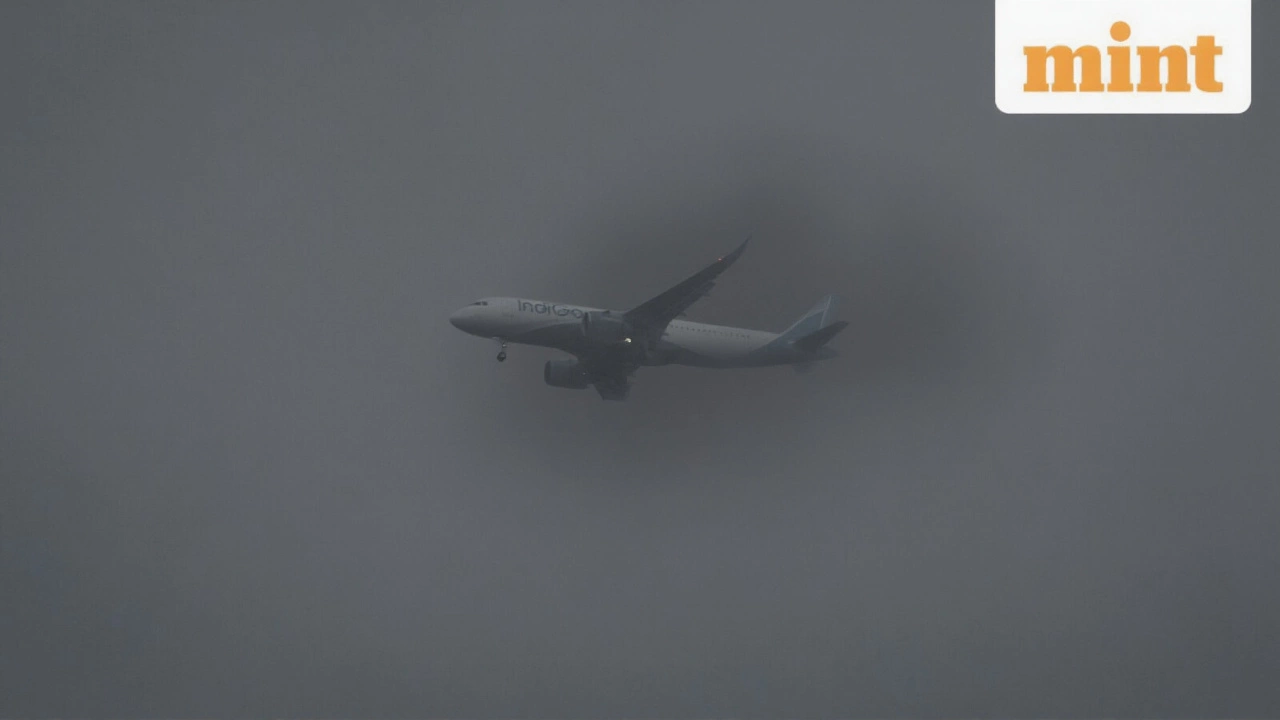When the HayliGubbi volcano in Ethiopia’s Afar region erupted on Sunday, November 23, 2025, few could have predicted it would ground flights halfway across the globe. Spewing ash 14 kilometers into the sky—the first such eruption in nearly 12,000 years—the plume didn’t just vanish into the upper atmosphere. It traveled east, crossing the Red Sea, skimming over Yemen and Oman, and by Monday night, reached Indian airspace. The result? Dozens of flights canceled, airports on alert, and airlines scrambling to keep passengers safe. This isn’t just weather. It’s geology with global consequences.
How a Remote Eruption Disrupted Indian Aviation
The Directorate General of Civil Aviation (DGCA) issued its advisory on Monday, November 24, 2025, after the Toulouse Volcanic Ash Advisory Centre and later the Tokyo Volcanic Ash Advisory Center confirmed the ash cloud’s trajectory. The DGCA didn’t mince words: airlines were told to avoid affected flight levels entirely. No exceptions. No compromises.Within hours, Akasa Air canceled all flights to and from Jeddah, Kuwait, and Abu Dhabi on the 24th and 25th. IndiGo diverted a Kannur-Abu Dhabi flight to Ahmedabad after radar picked up ash signatures near the Gulf. KLM axed its Amsterdam-Delhi route. But the biggest impact came from Air India, which canceled at least 11 flights—including AI 106 (Newark-Delhi) and AI 102 (New York-Delhi)—two of its most critical long-haul services. Domestic routes like AI 2822 (Chennai-Mumbai) and AI 2466 (Hyderabad-Delhi) were also scrapped.
Why Volcanic Ash Is an Aviation Nightmare
Volcanic ash isn’t like regular dust. It’s made of pulverized rock and glass—microscopic shards that melt at jet engine temperatures, coating turbine blades and clogging fuel nozzles. A single encounter can disable an engine. In 1982, a British Airways 747 lost all four engines after flying through ash from Indonesia’s Mount Galunggung. It glided 17 minutes before restarting—barely. That’s why airlines treat this like a nuclear threat.
“The glass particles are the real danger,” said Dr. Rajiv Mehta, an aviation safety analyst at the Indian Institute of Aerospace Technology. “They don’t show up on radar. You can’t see them. But they’ll eat through your engine like acid.”
The India Meteorological Department (IMD) is tracking the plume using satellite imagery and trajectory models, but the cloud remains high—above 30,000 feet. That’s where most international flights cruise. So even if the ash isn’t over your city, it’s still over your flight path.
Airports on High Alert
Major hubs like Mumbai, Delhi, Jaipur, and parts of Gujarat and Rajasthan issued passenger alerts. Mumbai’s airport warned that international routes to the Middle East and Europe could be affected. Ground crews were ordered to inspect runways and aprons for ash deposits. Even a thin layer can damage aircraft wheels, damage jet bridges, and clog air conditioning systems.
“We’ve got teams out there with industrial vacuums and brooms,” said an Airports Authority of India (AAI) official, speaking anonymously. “If ash settles, we can’t just open the gates. We have to clean it. Like sweeping up ground glass.”
Meanwhile, Air India conducted precautionary inspections on aircraft that had recently flown near the affected corridors. One technician described finding “fine, gritty residue” near engine intakes on a Delhi-Jeddah flight. “It looked like talcum powder mixed with sandpaper,” he said. “We scrubbed it off. But we’re grounding the plane for a full engine scan.”

Timing Couldn’t Have Been Worse
The eruption coincided with Northern India’s annual winter smog season. Normally, visibility is already low. Now, meteorologists are trying to distinguish between pollution and volcanic ash in satellite data. “It’s like trying to tell apart two shades of gray in a fog,” said an IMD scientist. “One’s man-made. One’s from a volcano 5,000 kilometers away. Both can ground planes.”
Airlines are now coordinating with international VAACs around the clock. Flight planning software has been updated with real-time ash forecasts. Fuel loads have been increased to allow for longer diversions. Crews are being briefed on ash encounter protocols—what to do if smoke appears in the cabin, or if engine performance dips.
What Comes Next?
The ash cloud is expected to linger for days, possibly drifting toward central India by Friday. If wind patterns shift, airports in Bengaluru and Hyderabad could see disruptions. The DGCA has ordered continuous monitoring through satellite feeds and is requiring airlines to report any suspected ash encounters within 30 minutes.
“We’re not shutting down aviation,” said a DGCA spokesperson. “We’re managing risk. Safety isn’t negotiable.”
Passengers are being urged to check flight status before heading to the airport. Some are already rebooking. Others are stuck. One traveler from New York to Delhi told reporters: “I flew through hurricanes, snowstorms, and a pandemic. But volcanic ash? That’s new.”
Frequently Asked Questions
How does this affect international travelers to and from India?
Travelers flying between India and Europe, the U.S., or the Gulf are most at risk. Air India alone canceled 11 international flights, including key routes like Newark-Delhi and New York-Delhi. Airlines are rerouting flights around the ash cloud, which adds 2–4 hours to journey times. Passengers should expect delays, cancellations, or overnight stops in hubs like Dubai or Istanbul until the plume clears.
Why can’t planes just fly under or over the ash cloud?
Commercial jets typically cruise between 30,000 and 40,000 feet—the exact altitude where the ash cloud is concentrated. Flying lower means increased fuel burn and reduced range. Flying higher isn’t possible for most aircraft due to structural and oxygen limitations. Plus, ash clouds spread over hundreds of miles. There’s no safe gap.
What’s being done to clean ash from airports?
Airports like Mumbai and Delhi are using industrial-grade vacuums and water sprays to remove ash from runways and aprons. Ground crews wear respirators because the fine particles can irritate lungs. Even a millimeter of ash can damage aircraft systems, so inspections are mandatory before any flight can depart. Cleaning can take 6–12 hours per runway.
Is this eruption connected to climate change?
No. Volcanic eruptions like HayliGubbi’s are driven by tectonic activity, not warming temperatures. However, climate patterns can influence wind direction, which affects where ash travels. This eruption’s path was steered by seasonal jet streams, which are shifting due to broader atmospheric changes—but the eruption itself is a natural geological event.
How often do volcanic ash events impact India?
Major disruptions are rare. The last significant event was in 2010, when Iceland’s Eyjafjallajökull eruption halted flights across Europe—but India was largely unaffected. This is the first time in over a decade that an African volcano’s ash has reached Indian airspace at flight levels. The last comparable eruption in Ethiopia was in 1994, but it didn’t reach India.
When will flights resume normally?
The DGCA says operations will resume once satellite data confirms the ash has dispersed below 20,000 feet and ground inspections are complete. Current projections suggest partial recovery by Thursday, November 27, 2025, but full normalization may take until the weekend, depending on wind shifts. Airlines are holding back new schedules until Friday.

